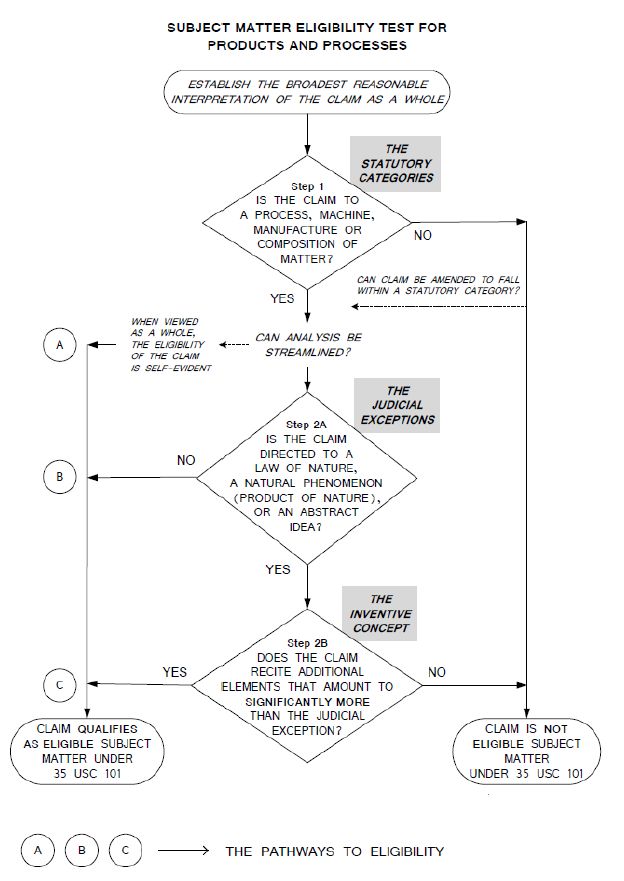Brian J Colandreo is a Partner in Holland & Knight's Boston
The U.S. Patent and Trademark Office (USPTO) on Jan. 4, 2019, announced revised guidance for subject matter eligibility under 35 U.S.C. § 101. The USPTO also concurrently announced guidance on the application of 35 U.S.C. § 112 to computer-implemented inventions. The documents took effect on Jan. 7, 2019.
Neither software nor computer programs are explicitly mentioned as being statuary subject matter in the United States patent statutes. However, the law has evolved to address new technologies, and decisions of various U.S. courts (e.g., the U.S. Supreme Court and U.S. Court of Appeals for the Federal Circuit) beginning in the latter part of the 20th century have sought to clarify the boundary between patent-eligible and patent-ineligible subject matter for a number of new technologies including computers and software.
On June 19, 2014, the U.S. Supreme Court ruled in Alice Corp. v. CLS Bank International that "merely requiring generic computer implementation fails to transform [an] abstract idea into a patent-eligible invention." The Court used the analysis from its decision in Mayo Collaborative Services v. Prometheus Laboratories, Inc. and held Alice's patents invalid as directed to an abstract idea, requiring an "inventive concept" for the claimed method to confer patent eligibility.
The Supreme Court in Mayo laid out a framework for determining whether an applicant is seeking to patent a judicial exception itself, or a patent-eligible application of the judicial exception. This framework, which is referred to as the Alice/Mayo test.
The first part of the Alice/Mayo test is to determine whether the claims are directed to an abstract idea, a law of nature or a natural phenomenon (i.e., a judicial exception). If the claims are directed to a judicial exception, the second part of the Alice/Mayo test is to determine whether the claim recites additional elements that amount to significantly more than the judicial exception. The Supreme Court has described the second part of the test as the "search for an 'inventive concept'."
The Alice/Mayo two-part test is used by the USPTO to evaluate the eligibility of claims under examination. The process of the Alice/Mayo two-part test is illustrated in the accompanying diagram.
In its statement for announcing the revised guideline, the USPTO states that properly applying the Alice/Mayo test in a consistent manner has proven to be difficult, and has caused uncertainty in this area of the law. Among other things, it has become difficult in some cases for inventors, businesses and other patent stakeholders to reliably and predictably determine what subject matter is patent-eligible. The legal uncertainty surrounding Section 101 poses unique challenges for the USPTO, which must ensure that its more than 8,500 patent examiners and administrative patent judges apply the Alice/Mayo test in a manner that produces reasonably consistent and predictable results across applications, art units and technology fields.

The content of this article is intended to provide a general guide to the subject matter. Specialist advice should be sought about your specific circumstances.
